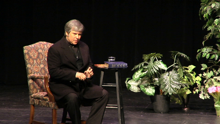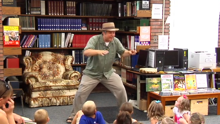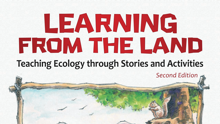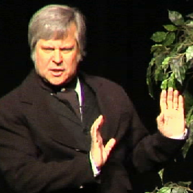Storytelling Magic Enhancing Childrens' Oral Language Reading And Writing
Once upon a time, before Dewey’s public school revolution, before Guttenburg’s printing press, storytelling was the basis of all good teaching. Storytelling was an honored practice in ancient times as people huddled around campfires sharing stories in an attempt to explain and understand the natural and spiritual world. Storytelling also was the proven means by which a village could assemble its knowledge and survive. Folktales grew out of the lives and imaginations of the people, or folk, as families, young and old alike, tribes, or a king’s court gathered to hear the wise and clever storytellers. All cultures have passed tales from generation to generation through the oral tradition. Folktales traveled from country to country through traders, storytellers, and the migrations of peoples (Huck, Hepler, Hickman, & Kiefer, 1997).
According to Anderson (2002) and Russell (1997), some stories were told for pure entertainment. Others were used to share the history of a group of people, to teach lessons, and transmit cultural values and beliefs. These stories helped explain natural phenomena. Still others involved religious beliefs, such as creation, and were an attempt to understand our place in the universe and how the world was made.
After ten thousand years of storytelling, the printing press was invented and many of these oral folktales were written down. Jean de la Fontaine translated Aesop’s fables, including the Fox and the Crow and The Tortoise and the Hare and wrote some of his own in the late 1600s. In 1697, Charles Perrault recorded the tales his nursemaid had told him as a child and published them in England in 1729 as Tales of Mother Goose. Stories included The Sleeping Beauty, Little Red Riding Hood, and Cinderella. Jakob and Wilhelm Grimm collected stories and published their first volume, Nursery and Household Tales in 1812. Popular stories included Hansel and Gretel, Rumpelstiltskin, and Snow White. In 1846, Hans Christian Andersen’s Fairy Tales were published in English, including his original stories of The Little Mermaid, The Emperor’s New Clothes, and The Ugly Duckling. Joseph Jacob’s English Fairy Tales, including The Three little Pigs, Henny Penny, and Jack and the Beanstalk, were published in 1898. These traditional folktales became an integral part of American education.
When books became readily available in public schools, students were taught to read, and less emphasis was placed on storytelling. However, storytelling is not only a social experience, it also acts as an effective building block, easing the journey from oral language to literacy (Dyson & Freedman, 1991). Recently there has been a -revival in the art of storytelling. The goal of this article is to invigorate classrooms with storytelling in order to motivate and enhance children’s oral language, reading, and writing development.
Rationale
Storytelling strongly attracts children to books. It has a power that reading stories does not because it frees the storyteller to use creative techniques (Morrow, 2001). It also has the advantage of keeping the storyteller close to the audience. Telling a story produces an immediate response from the audience and is one of the surest ways to establish rapport between listeners and storyteller.
Storytelling allows you to adapt a story to fit the audience. You can add to the story to clarify unknown words or to connect the story to the children’s experiences. Stories also can be shortened if children’s attention spans seem to be short. Some stories lend themselves to the use of puppets, felt-boards, prop stories, chalk talks, or sound stories to assist children in telling the story.
Storytelling is one of the most important tools of any educator because it engages children in learning. According to Phillips (1996), Koki (1996), and Zabel (1991), storytelling can help develop a variety of life, learning, and literacy skills and strategies. Through storytelling children can learn about and celebrate cultural diversity.
Children will develop an understanding of human nature and feelings, as well as an awareness of characteristics that people assume. Storytelling provides for multiple learning styles through active participation, cooperative, and social learning. Children develop a longer attention span and their ability to actively listen, demonstrated by following instructions and remembering sequences. By engaging in storytelling, children also develop their language skills, utilize a variety of critical and higher level thinking strategies, and enhance their understanding of concepts.
Storytelling need not become an additional activity in an already crowded curriculum; rather it can be used to meet many of the Standards for English Language Arts (National Council of Teachers of English & the International Reading Association, 1996). By listening to, telling, and re-reading folktales, children are able to build an understanding of texts, of themselves, and of cultures (Standard 1); apply a wide range of strategies to comprehend, interpret, evaluate, and appreciate texts (Standard 3); and adjust their use of spoken, written, and visual language to communicate effectively with a variety of audiences (Standard 4). By re-writing folktales children are able to employ a wide range of strategies as they write and use different elements of the writing process to communicate for a variety of purposes (Standard 5). Thus, by engaging children in listening to folktales and participating in telling, reading, and writing folktales, a teacher can integrate all of the areas of language arts into the curriculum.
Enhancing Oral Language
Now that oral language processes are commonly recognized as the basis for beginning reading, they are considered a critical part of early literacy instruction (Morrow, 2001). Language learning includes vocabulary, grammar, syntax, and pronunciation. Because storytelling relies so much on words, stories offer a tremendous source of language experience for children (Koki, 1996). Storytelling also enhances language learning through understanding the stories, the vocabulary, and the language patterns inherent to folktales.
Morrow (2001) stated that language development can be promoted through aesthetic talk around stories. In this talk, children have an opportunity to interpret what they have read or listened to. Children can participate in aesthetic talk when discussing literature, telling stories, participating in Readers Theater, or engaging in dramatic activities based on a story. Children can share experiences, explore their understanding of ideas, and interact with peers.
Enhancing Reading Comprehension
Reading aloud is wonderful and necessary, but the dramatic oral interpretation of traditional stories has been shown to increase comprehension and vocabulary knowledge in students when compared to reading aloud (Trostle & Hicks, 1998). The act of listening to or telling stories builds a cognitive framework for the understanding of text. Students’ understanding of stories is much richer when they are exposed to dynamic storytelling (Jennings, 1991).
Storytelling enhances comprehension skills such as visualizing, inferencing, organizing information, summarizing, making connections, and predicting outcomes (Tompkins, 2003). Although these strategies are considered reading and writing strategies, according to Tompkins they also are used for listening, talking, and viewing. By listening to and participating in storytelling, children are better able to make connections between what they have heard and what they see in print.
When storytelling is combined with questioning and retelling strategies, comprehension skills at the literal, inferential, and critical levels can be developed (Mallan, 1991). These skills are highly useful for reading comprehension.
Storytelling also can help students become better writers by modeling how language works, how stories are constructed, how characters develop, how to draw a picture with words, how to begin, solve problems and end, and how to weave the complex foreshadowing and ironic twists of plot. We have found that when writing is taught in the context of storytelling, children are able to create characters and settings, sequence the events in the plot, and write happily ever after solutions.
Elements of Folktales
There are several distinctive elements of folktales that make them ideal for beginning storytellers. The story usually begins with a short formulaic opening, such as "Once upon a time." The setting is often generalized and universal such as a road or a bridge or in a forest. The characters are flat, not well-developed, and stereotypic, such as good or evil. These features can be presented in a few sentences, allowing a storyteller to concentrate memory and mental energy on the development of the plot. There are generally two types of plot structures—linear and cumulative. In the linear plot a problem is introduced, followed by a series of events as the character attempts to solve the problem, such as in Sleeping Beauty. In cumulative tales, the characters, problem, and actions build upon each other. It often includes a repetition of phrases, such as in the Gingerbread Man. This repetition eases the memory load for younger storytellers. Folktales often end abruptly with a short, sweet resolution and a formulaic ending, such as “they lived happily ever after” (adapted from Buss & Karnowski, 2000).
In addition, most students are familiar with the genre of folktales and can tell and comprehend them better than other genres.
Fairy tales and fables are of primary importance because they are the roots of all great literature. Countless novels, operas, poems, and modern short stories are the fruits born from classic fairy tales. Much of our political jargon, media double-speak, and commercial messages borrow their punch lines from classic fables. If students are unaware of the roots of this cultural history, they miss many of the subtle metaphors and innuendoes of modern communication. They are less able to be active citizens, players in the game of life, if they are ignorant of these cultural motifs that influence so much of modern society. When the Grimm Brothers’ tales have been translated into 166 languages and La Fontaine’s fables show up in a Wall Street investment advertisement, there is clear evidence of the importance of these stories. The authors of the movie Shrek did a great job of tumbling together these subtle innuendoes, but the movie begs the question: If students are unfamiliar with the underlying stories, how many of the jokes did they miss?
Telling Stories
Storytelling, considered an art form, can be mastered by most people (Morrow, 2001). Storytelling is both an in-bred talent that we are all born with and a learned skill. We are storytelling creatures; it is in our genetic code. At the same time, with practice and coaching, we can become more proficient tellers of tales. Think about storytellers you have seen. What do they do to bring the story to life? Who were your favorite professors, teachers, preachers, and politicians? What techniques did they employ to hold your attention, to make ideas live and breathe? Different personalities tell stories differently. The most important thing is to find a presentation style that suits your personality. With this said, there are a few general techniques to consider:
-
Use your voice to create characters, express emotions, and experiment with pacing, tone, accents, and sound effects.
-
Use your body language, facial expressions, and gestures to convey the unspoken and reinforce the words you are speaking.
-
Use your imagination and include all five senses in the tale as you tell it. The more real you can imagine it, the more real it becomes for your audience, even if it is a work of fiction.
-
Involve the audience with simple rhetorical questions or complex sing-a-long songs. Within the body of the story, allow the listeners a chance to discuss an idea with a partner or add elements of plot or characters to the story as you tell it.
-
Invite them to sing-a-long or stand up and act out part of the story.
-
Engage the audience as a partner in the telling of the tale.
-
Use your voice, body, imagination, and the audience to tell, not read, the story.
For more about storytelling techniques visit www.foxtalesint.com and click on the fox.
Beyond technique, the most critical element is your passion for the content. If you can tell the story in a manner that conveys this excitement, your contagious enthusiasm will be the key to a successful telling.
Learning Stories
The most important thing is that you choose a story that you really enjoy and could imagine yourself telling. If you don't love it, do you think the audience will? When you have found that favorite folktale or story, read it over several times. Read it once out loud for feeling, rhythm, and tone; once to get to know the characters (imagine you are each of them); once to get to know the place or setting (imagine you are in that place); and once to learn the order of events. Write a brief outline of the five main events or make a story map with five sequential pictures to help you. Do not memorize the story. Simply remember the important scenes, feelings, images, and phrases. Remember the bare bones and flesh it out differently each time you tell it. Be in your story and let your words describe what is happening in your mind. Decide ahead of time how to use gestures, props, voices, and audience participation to make the story come alive for the children.
Practice, Practice, Practice! These are the three keys to success. Tell the story to each family member, every friend who will listen, the dog, the cat, and the goldfish. In the beginning ask only for positive feedback, such as “What am I doing right? What is working?” Later, when you are able to screen good from bad, ask for constructive criticism. Tape record the story or tell it in front of a large mirror so you can critique yourself.
If you have the time and inclination, research the story for accuracy and authenticity. Read similar tales or look for different versions of the same tale. Compare and contrast these tales. Read about the lives of the author, and the culture and time period in which they wrote. A wonderful way to enhance your storytelling is by actually going where the stories took place. This past summer, the authors had a unique opportunity to visit Denmark, Germany, and France to study the folktales and cultures of those countries. In Germany, we traveled the “Marchen Strasse” or fairy tale road, learning about the Brothers Grimm and the German culture (see Figure 1). We experienced and told stories as we hiked in the Black Forest as if we were Hansel and Gretel, stood in the parapet of Rapunzel’s Castle, walked in the footsteps of the Pied Piper in the town of Hamlen, and held onto the bronze figure of the Bremen Town Musicians for good luck. These inspiring experiences added depth and breadth to our storytelling.
Teaching Storytelling
The only way for students to learn storytelling is by doing it! If teachers can model the imaginative, creative, dramatic telling of tales and allow students a chance to tell their own stories, there will be a flowering of storytelling in their class! I tell, We tell, You tell is a simple strategy for learning and teaching a story. First tell a short, short story, such as Once There Was an Old Witch to the children:
Once There Was an Old Witch
Once there was an old witch, (cackle)
Stirring her pot. (Stirring with your arm, shoulders, and your entire torso.)
Along came two ghosts. (Changing your voice to sound like a ghost.)
“I wonder what she’s got?” (Pointing.)
Tiptoe, tiptoe, BOO! (Use your hands like feet to tiptoe and then scream BOO!)
I got you! (Take a bow.)
Then invite your students to tell it together with you using call and response. Then invite them to take turns telling it to a partner. Finally, invite a few students to tell the same story to the class. With younger students, insert an extra step before telling it together by having them listen and then repeat while you tell the story in parts. Tell Once There Was an Old Witch with great panache. Cackle like a witch! Talk in an old English ghostly voice. Tip-toe with a whisper and then scream your boo to scare the listeners. With this type of jump tale the important thing is timing. If you lower your voice and pause with each tiptoe, you draw your listeners in and set up a suspense that you can shatter with a good, loud boo.
Challenge the students to work on their timing and try to scare their partner even though they know what’s coming. If time allows, ask a few students to stand up and tell the story to the class. Always follow one of these performances with a round of applause and a compliment.
Once you learn one story and the process for telling that story, it becomes very easy to learn and tell many stories. If you can tell this simple, four-sentence story, you are ready for Shakespeare! There are many short, simple stories like this that you can use in this process but this is a favorite. Once students learn a few short stories, you can use this same process to teach children a little longer story like a fable or pourquoi story.
Play theater games to help students work on articulation, dramatic interpretation, pantomime, dance, and body language. Play the circular storytelling game in which you start a story and then allow students to add to it as they pass it around a small group of four. Encourage parents to tell and invite storytellers to your class so your students can see different styles of telling.
From Storytelling to Reading and Writing:
Oral language development contributes to better reading and writing. By telling stories and giving students a chance to tell stories, teachers can improve students’ vocabulary and reading comprehension, model good literature, and motivate writing. To help students become better writers and learn critical reading strategies, why not copy from the masters? Allow them to read several versions of the same Grimm Brothers’ story and then rewrite the story creating their own version with modern language and idioms. Compare and contrast La Fontaine’s fables with Aesop’s fables, discuss the cultural differences, and then challenge students to write their own version with modern American cultural motifs.
Read aloud Perrault’s Cinderella and Sleeping Beauty with the Grimms’ Aschenputtel and Snow White. Compare these to the American Indian story The Rough Faced Girl by Rafe Martin. Discuss the “time of ashes” and the need to stand separate from your parents to find your inner beauty. Ask students to write a personal narrative that exemplifies this ‘lost in the forest feeling’ and how they woke up to some new awareness. This might sound heady for elementary children, but the stories make these abstract ideas concrete and give the students metaphors for discussing their lives in these terms. Folktales also provide models for this kind of complex writing and story development.
After immersing students in a study of fables and fairy tales from many cultures, invite them to use the elements of a good folktale to create their own! When children create their own folktales, they are able to integrate their knowledge of language, culture, folktale themes, and story structures (setting, character, theme, plot episodes, and resolution) into their own creative stories. Allow them to tell these stories to the class or better yet, host a storytelling festival in which your students perform for other classes and their families, so that the whole community will grow richer in tales tall and true! Invite a storyteller to your school to perform and teach creative writing in an artist-in-residence program.
Conclusion
Storytelling is an exciting way to engage children in listening, speaking, reading, and writing throughout the curriculum. We hope this article provides an invitation to incorporate the joy of storytelling into your classroom, so that both you and your students will live happily ever after. For more storytelling ideas and lesson plans, please visit the One-Room School House at www.foxtalesint.com.
About the Authors
Stephanie McAndrews is an assistant professor in the Department of Curriculum and Instruction at Southern Illinois University in Edwardsville. She teaches graduate and undergraduate courses in early and content area literacy, literacy assessment, diagnostic instruction, and clinical practica. She is an experienced elementary classroom teacher, reading specialist, and Reading Recovery Teacher. Recently she piloted the Illinois Snapshot of Early Literacy Assessment.
Brian “Fox” Ellis is a published poet, professional storyteller, freelance writer, and the author of seven books, including a collection of original science stories, Learning From the Land (Teacher Ideas Press, 1997). He is the artistic director of Prairie Folklore Theatre and a frequent keynote speaker at educational conferences. One of his goals is to awaken the taleteller in us all and help listeners connect to their family history through story and song.
References
Anderson, N. A. (2002). Elementary children’s literature: The basics for teachers and parents.
Boston: Allyn and Bacon.
Boston: Allyn and Bacon.
Buss, K., & Karnowski, L. (2000). Reading and writing literacy genres.
Newark, DE: International Reading Association.
Newark, DE: International Reading Association.
Dyson, A. H., & Freedman, S. W. (1991). Writing. In J. Flood, J. M. Jensen, D. Lapp, & J. R. Squire (Eds.), Handbook of research on teaching English language arts. New York: Macmillan.
Huck, C., Hepler, S., Hickman, J., & Kiefer, B. (1997). Children’s literature in the elementary school. Boston: McGraw-Hill.
Koki, S. (1996). Storytelling: The heart and soul of education. Honolulu, HI: Pacific Resources for Education and Learning. Retrieved from:
Morrow, L. M. (2001). Literacy development in the early years: Helping children read and write. Boston: Allyn and Bacon.
Mallan, K. (2000). Teaching storytelling as part of university and professional development courses. In N. Yelland (Ed.), Innovations in practice: Promoting meaningful learning for early childhood professionals (pp. 59–66). Washington, DC: NAEYC.
National Council of Teachers of English and the International Reading Association. (1996). Standards for the English language arts. National Council of Teachers of English and the International Reading Association
Phillips, L. (1996). Storytelling to young children. Retrieved from: http://www.home.aone.net.au/stories/doc/young.htm (Editor's Note: Site has since been removed.)
Russell, D. L. (1997). Literature for children. New York: Longman.
Tompkins, G. E. (2003). Literacy in the 21st century (3rd ed.). Upper Saddle River, NJ: Merrill Prentice Hall.
Trostle, S., & Hicks, S. J. (1998). The effects of storytelling versus story reading on comprehension and vocabulary knowledge of British primary school children. Reading Improvement, 35, 127–136.
Zabel, M. K. (1991). Storytelling, myths, and folktales: Strategies for multicultural inclusion. Preventing School Failure, 32.
Folktale Bibliography
Andersen, H. C. (1993). Complete Hans Christian Andersen fairy tales. Owens, L. (Ed.) New York: Gramercy.
DeSpain, P. (1993). Thirty-three multicultural tales to tell. Little Rock, AR: August House.
Forest, H. (1996). Wisdom tales from around the world. Little Rock, AR: August House.
Perrault, C. (1959). Famous fairy tales. New York: Grolier.
Tatar, M. (1999). The classic fairy tales. New York: W.W. Norton.
Winter, M. (1994). The Aesop for children. New York: Scholastic.
Yolen, J. (1986). Favorite folktales from around the world. New York: Pantheon.
Zipes, J. (1987). The complete fairy tales of the brothers Grimm. New York: Bantam.









